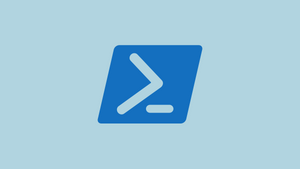PowerShell provides a secure and efficient way to manage user accounts on Windows 11. For administrators and power users, it offers the flexibility to automate tasks and handle multiple accounts effortlessly. In this guide, we'll explore several methods to change the password of a local account using PowerShell.
Change Account Password on Windows 11 using PowerShell
Note that PowerShell can only change passwords for local accounts on your computer. If you're using a Microsoft account to sign in, you'll need to change your password through the Microsoft website or your account settings.
Using Get-LocalUser and Set-LocalUser Cmdlets
This method allows you to change the password securely without exposing it in plain text. Follow these steps:
Step 1: Open the Start menu, search for PowerShell, and click on 'Run as administrator' to launch it with administrative privileges. Confirm the User Account Control prompt by clicking 'Yes'.

Step 2: To view all the local user accounts on your computer, type the following command and press Enter:
Get-LocalUser
Step 3: Generate a secure password string by entering the command below and pressing Enter:
$Password = Read-Host "Enter new password" -AsSecureStringType your new password when prompted and press Enter. The password you enter will be converted into a secure string.

Step 4: Specify the user account you want to update by executing the following command. Replace "Username" with the actual username:
$UserAccount = Get-LocalUser -Name "Username"Step 5: Set the new password for the user account using this command:
$UserAccount | Set-LocalUser -Password $PasswordExample:
$UserAccount = Get-LocalUser -Name "kalki51"
$UserAccount | Set-LocalUser -Password $Password
The password for the specified account has now been changed securely.
Using Set-LocalUser Command with ConvertTo-SecureString
This method changes the password by converting it into a secure string within the command:
Step 1: Launch PowerShell as an administrator.
Step 2: Execute the following command, replacing Username with your account name and NewPassword with the desired password:
Set-LocalUser -Name "Username" -Password (ConvertTo-SecureString -AsPlainText "NewPassword" -Force)The ConvertTo-SecureString cmdlet transforms the plain text password into a secure string, enhancing security.
Example:
Set-LocalUser -Name "kalki51" -Password (ConvertTo-SecureString -AsPlainText "tax234@52" -Force)
The command completes without a confirmation message. You can verify the password change by logging in with the new password.
Using the WMI Win32_UserAccount Class
This method utilizes Windows Management Instrumentation (WMI) to change the account password:
Step 1: Open PowerShell with administrative rights.
Step 2: Run the following commands, pressing Enter after each line. Replace Username and NewPassword with your actual username and new password:
$user = Get-WmiObject Win32_UserAccount -Filter "Name='Username'"$user.SetPassword("NewPassword")Example:
$user = Get-WmiObject Win32_UserAccount -Filter "Name='kalki52'"
$user.SetPassword("pswd12345")
The password for the specified user account will be updated accordingly.
Using Net User Command
This traditional method changes the password but exposes it in plain text, which is less secure:
Step 1: Run PowerShell as an administrator.
Step 2: Enter the following command, substituting Username and NewPassword with the relevant information:
net user Username NewPasswordExample:
net user kalki51 Saht!3225
Be aware that this method stores the password in plain text, which can be viewed in command history. It's advisable to use this method only if necessary and ensure that command history is cleared afterward.
By utilizing these PowerShell methods, you can efficiently change local account passwords on Windows 11. Choose the approach that best meets your security requirements and administrative preferences.











Member discussion